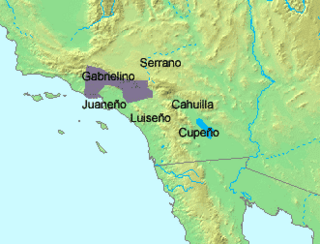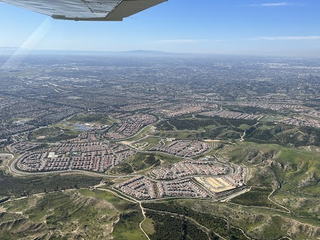Related Research Articles

Washo is an endangered Native American language isolate spoken by the Washo on the California–Nevada border in the drainages of the Truckee and Carson Rivers, especially around Lake Tahoe. While there are only 20 elderly native speakers of Washo, since 1994 there has been a small immersion school that has produced a number of moderately fluent younger speakers. The immersion school has since closed its doors and the language program now operates through the Cultural Resource Department for the Washoe Tribe. The language is still very much endangered; however, there has been a renaissance in the language revitalization movement as many of the students who attended the original immersion school have become teachers.

Uto-Aztecan, Uto-Aztekan is a family of indigenous languages of the Americas, consisting of over thirty languages. Uto-Aztecan languages are found almost entirely in the Western United States and Mexico. The name of the language family was created to show that it includes both the Ute language of Utah and the Nahuan languages of Mexico.

Chumashan was a family of languages that were spoken on the southern California coast by Native American Chumash people, from the Coastal plains and valleys of San Luis Obispo to Malibu, neighboring inland and Transverse Ranges valleys and canyons east to bordering the San Joaquin Valley, to three adjacent Channel Islands: San Miguel, Santa Rosa, and Santa Cruz.

John Peabody Harrington was an American linguist and ethnologist and a specialist in the indigenous peoples of California. Harrington is noted for the massive volume of his documentary output, most of which remains unpublished: the shelf space in the National Anthropological Archives dedicated to his work spans nearly 700 feet.

The Kawaiisu are a Native Californian ethnic group in the United States who live in the Tehachapi Valley and to the north across the Tehachapi Pass in the southern Sierra Nevada, toward Lake Isabella and Walker Pass. Historically, the Kawaiisu also traveled eastward on food-gathering trips to areas in the northern Mojave Desert, to the north and northeast of the Antelope Valley, Searles Valley, as far east as the Panamint Valley, the Panamint Mountains, and the western edge of Death Valley. Today, some Kawaiisu people are enrolled in the Tule River Indian Tribe.

The Tongva language is an extinct Uto-Aztecan language formerly spoken by the Tongva, a Native American people who have lived in and around modern day Los Angeles for centuries. It has not been a language of everyday conversation since the 1940s. The Gabrielino people now speak English but a few are attempting to revive their language by using it in everyday conversation and ceremonial contexts. Presently, Gabrielino is also being used in language revitalization classes and in some public discussion regarding religious and environmental issues. Tongva is closely related to Serrano. The names of several cities and neighborhoods in Southern California are of Tongva origin, and include Pacoima, Tujunga, Topanga, Azusa, Cahuenga in Cahuenga Pass and Cucamonga in Rancho Cucamonga.
Kitanemuk was a Northern Uto-Aztecan language of the Serran branch. It was very closely related to Serrano, and may have been a dialect. It was spoken in the San Gabriel Mountains and foothill environs of Southern California. The last speakers lived some time in the 1940s, though the last fieldwork was carried out in 1937. J. P. Harrington took copious notes in 1916 and 1917, however, which has allowed for a fairly detailed knowledge of the language.
The Kitanemuk are an indigenous people of California. They traditionally lived in the Tehachapi Mountains and the Antelope Valley area of the western Mojave Desert of southern California, United States. Today some Kitanemuk people are enrolled in the federally recognized Tejon Indian Tribe of California.

The Tübatulabal are an indigenous people of Kern River Valley in the Sierra Nevada range of California. They may have been the first people to make this area their permanent home. Today many of them are enrolled in the Tule River Indian Tribe. They are descendants of the people of the Uto-Aztecan language group, separating from Shoshone people about 3000 years ago.

The Serrano are an indigenous people of California. They use the autonyms of Taaqtam, meaning "people"; Maarrênga’yam, "people from Morongo"; and Yuhaaviatam, "people of the pines." Today the Maarrênga'yam are enrolled in the Morongo Band of Mission Indians, and the Yuhaviatam are enrolled in the San Manuel Band of Mission Indians. Additionally, some Serrano people are enrolled in the Soboba Band of Luiseno Indians.

The Tataviam are a Native American group in Southern California. The ancestral land of the Tataviam people includes northwest present-day Los Angeles County and southern Ventura County, primarily in the upper basin of the Santa Clara River, the Santa Susana Mountains, and the Sierra Pelona Mountains. They are distinct from the Kitanemuk and the Gabrielino-Tongva peoples.

The Nicoleño were an Uto-Aztecan people who lived on San Nicolas Island in California. Its population was "left devastated by a massacre in 1811 by sea otter hunters". Its last surviving member was given the name Juana Maria, who was born before 1811 and died in 1853.
Ventureño is a member of the extinct Chumashan languages, a group of Native American languages previously spoken by the Chumash people along the coastal areas of Southern California from as far north as San Luis Obispo to as far south as Malibu. Ventureño was spoken from as far north as present-day Ventura to as far south as present-day Malibu and the Simi Hills, California. Dialects probably also included Castac and Alliklik.
Kitanemuk traditional narratives include myths, legends, tales, and oral histories preserved by the Kitanemuk people of the Tehachapi Mountains, southern Sierra Nevada, and the western Mojave Desert of southern California.

The Takic languages are a putative group of Uto-Aztecan languages historically spoken by a number of Indigenous peoples of Southern California. Takic is grouped with the Tubatulabal, Hopi, and Numic languages in the northern branch of the Uto-Aztecan family.
Tamcan or Tammukan was a local tribe of Delta Yokuts-speaking natives in the U.S. that once lived on the lower reaches of California's San Joaquin River in what is now eastern Contra Costa County and western San Joaquin County, California. The Tamcans were absorbed into the system of the Spanish missions in California in the early nineteenth century; they moved to Mission San José, near the shore of San Francisco Bay, between 1806 and 1811. At the mission, they and their descendants intermarried with speakers of the San Francisco Bay Ohlone, Plains Miwok, and Patwin Indian languages. Mission Indian survivors of these mixed groups gathered at Alisal, near Pleasanton in Contra Costa County, in the late nineteenth century.
Proto-Uto-Aztecan is the hypothetical common ancestor of the Uto-Aztecan languages. Authorities on the history of the language group have usually placed the Proto-Uto-Aztecan homeland in the border region between the United States and Mexico, namely the upland regions of Arizona and New Mexico and the adjacent areas of the Mexican states of Sonora and Chihuahua, roughly corresponding to the Sonoran Desert and the western part of the Chihuahuan Desert. It would have been spoken by Mesolithic foragers in Aridoamerica, about 5,000 years ago.
Hometwoli was a dialect of Buena Vista Yokuts spoken in the southern portion of the Tulare Basin of California near Kern Lake.
The Vanyume or Desert Serrano are an Indigenous people of Southern California. Traditional Vanyume territory extended along the Mojave River from the Eastern Mojave Desert to present day Victorville and may have included portions of southern Antelope Valley. The major village of Wá’peat was part of this area.

Orchard Hills is one of the master-planned communities of Irvine, California. To the east, it borders Limestone Canyon Regional Park, and to the west lies North Tustin, California. Located between 261 Highway and 241 Highway, the community is home to the Rattlesnake and Syphon reservoirs.
References
- Beeler, Madison, and Kathryn A. Klar. 1977. "Interior Chumash". Journal of California Anthropology 4:287-305.
- Bright, William. 1975. "The Alliklik Mystery". Journal of California Anthropology, 2:228-230.
- Goddard, Ives. 1996. "Introduction". In Languages, edited by Ives Goddard, pp. 1–16. Handbook of North American Indians, William C. Sturtevant, general editor, vol. 17. Smithsonian Institution, Washington, D.C.
- Hinton, Leanne. 1994. Flutes of Fire: Essays on California Indian Languages. Heyday Books, Berkeley, California.
- Hudson, Travis. 1982. "The Alliklik-Tataviam Problem". Journal of California and Great Basin Anthropology 4:222-232.
- Johnson, John R., and David D. Earle. 1990. "Tataviam Geography and Ethnohistory". Journal of California and Great Basin Anthropology 12:191-214.
- Pamela Munro with John Johnson. 2001. "What Do We Know about Tataviam? Comparisons with Kitanemuk, Gabrielino, Kawaiisu, and Tübatulabal," paper presented to the Friends of Uto-Aztecan Conference, Santa Barbara, California, July 9, 2001.
- King, Chester, and Thomas C. Blackburn. 1978. "Tataviam". In California, edited by Robert F. Heizer, pp. 535–537. Handbook of North American Indians, William C. Sturtevant, general editor, vol. 8. Smithsonian Institution, Washington, D.C.